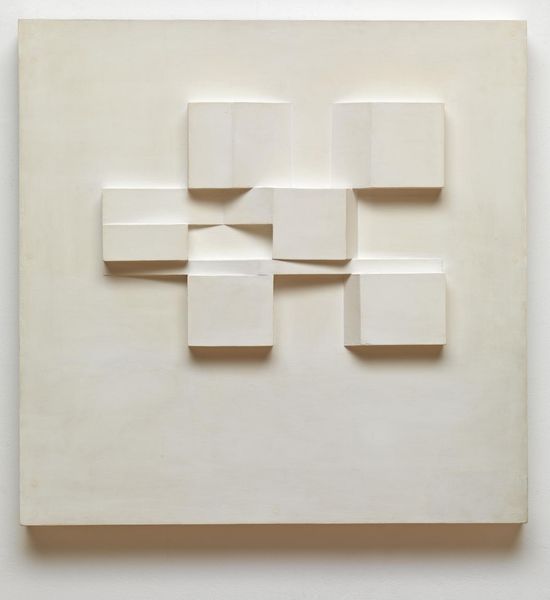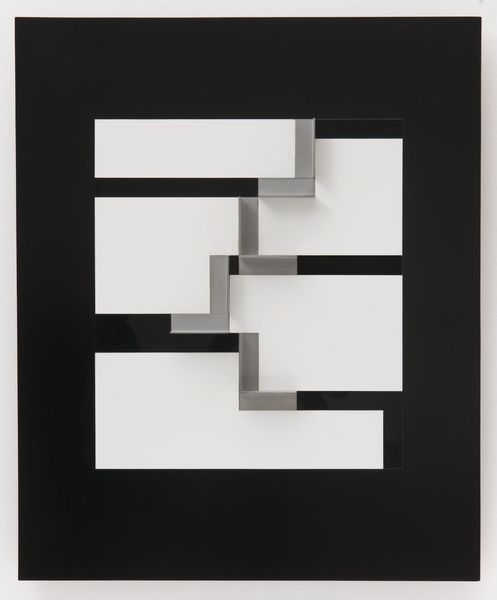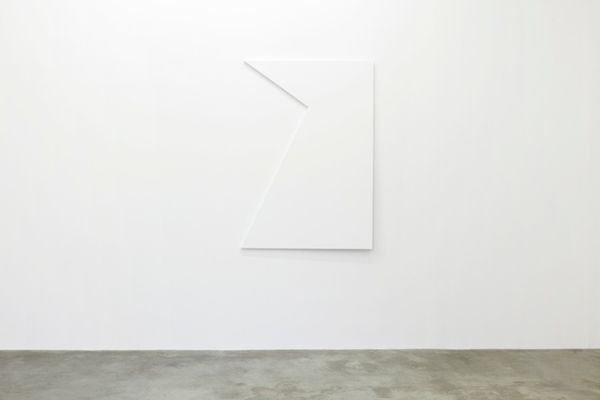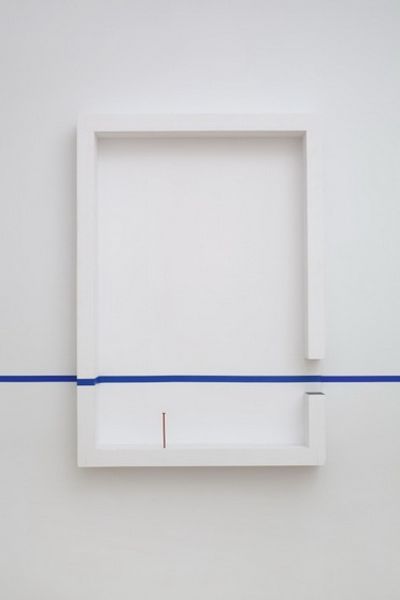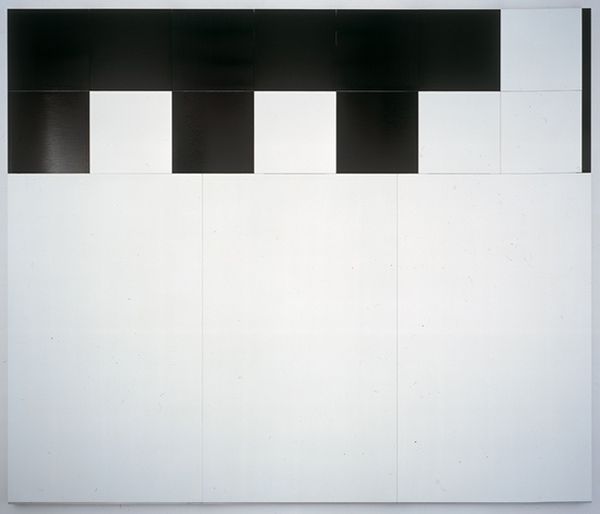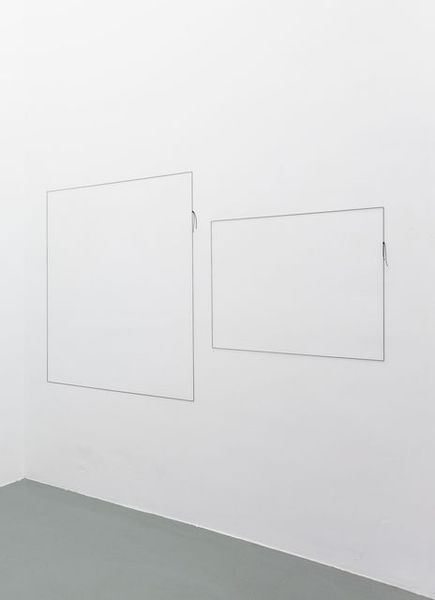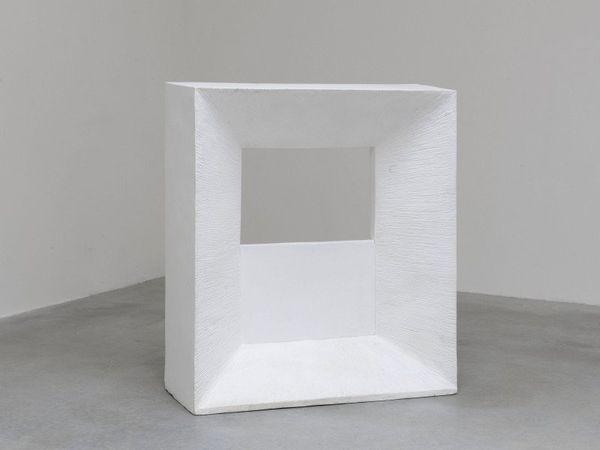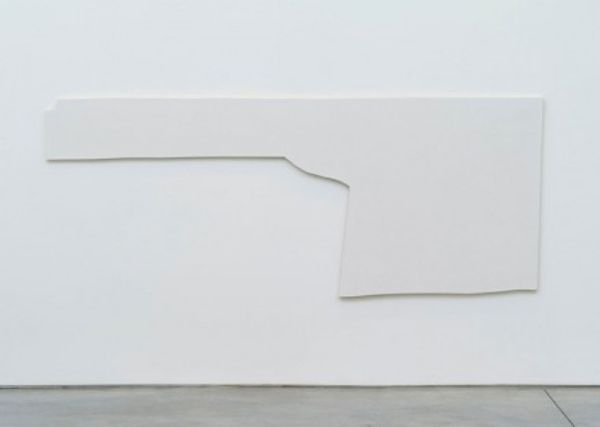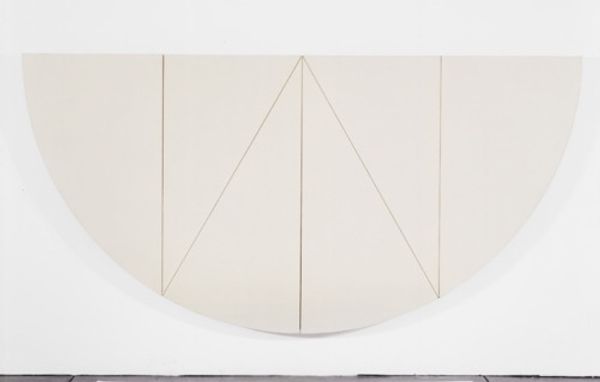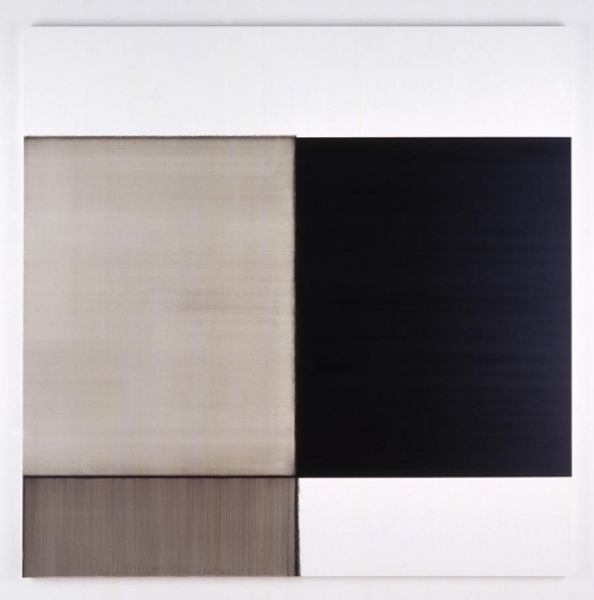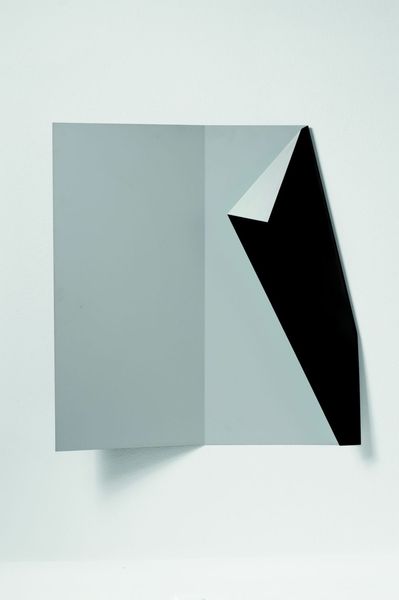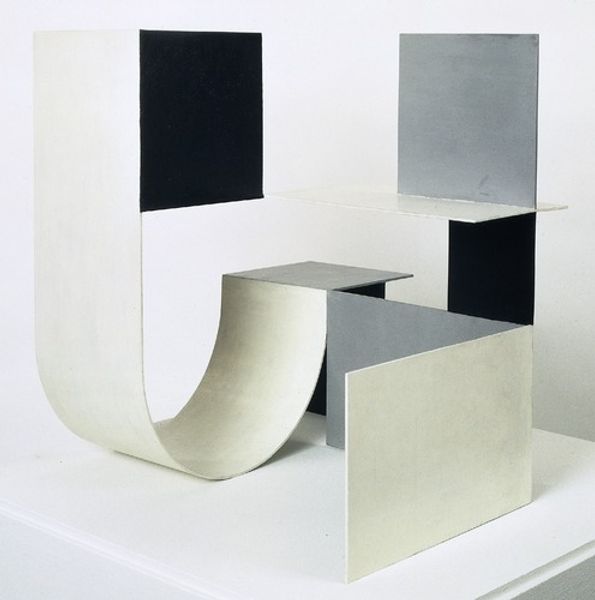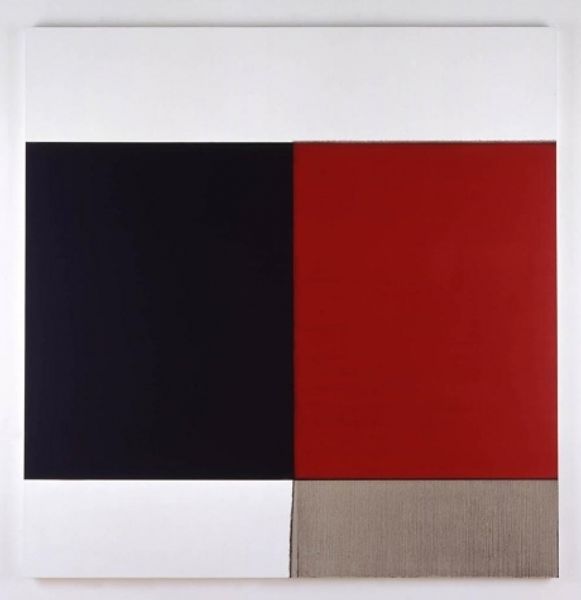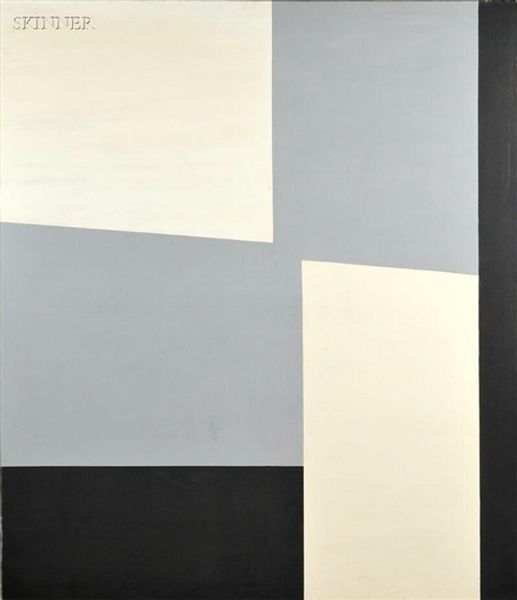
mixed-media
#
mixed-media
#
constructivism
#
form
#
tonal
#
geometric
#
abstraction
#
line
#
modernism
Copyright: Victor Pasmore,Fair Use
Curator: Before us is Victor Pasmore's "Synthetic Construction (White and Black)," created in 1966. It’s a mixed-media work. Editor: It has a strangely soothing quality, despite its geometric austerity. The subtle layering of tones and forms creates a sense of depth that's quite engaging. Curator: Pasmore was deeply involved with Constructivism at this time. The emphasis here on geometric form and material construction speaks volumes about a period preoccupied with industrial and architectural advancements. One sees elements of architectural modelling in this relief. Editor: Absolutely, the interplay between the white plane and the hovering geometric forms strikes me as incredibly calculated. The lines, both painted and protruding, dissect the surface according to their own logic. Did Pasmore's move away from representational painting cause a stir in British art? Curator: His shift certainly challenged traditional art narratives. It coincided with a broader rethinking of art’s role within a rapidly changing social fabric. He sought a universal language of form—detached from the vagaries of everyday representation. The subdued palette lends the work an air of timelessness. Editor: Yet the composition, slightly off-center, introduces a subtle tension. It resists easy equilibrium, mirroring, perhaps, the anxieties of a society grappling with constant change. Curator: Precisely! The tension underscores the formal qualities. Note, for example, how he manipulates spatial relationships. The arrangement toys with our perception. It's never simply flat nor truly deep. The semi-transparency of that central square plays an interesting role, doesn't it? Editor: It introduces another plane of ambiguity, obscuring and revealing at once. That simple tonal contrast becomes surprisingly rich. It does indeed. What was the initial public reaction to this new approach by Pasmore? Curator: Initial reviews were divided, of course. Some praised his formal purity. Others saw it as a cold departure from the human element. It prompted debate. Editor: Which is, arguably, the true purpose of art: To force conversations. To offer viewpoints into how art influences and reflects social changes within cultural environments, and to engage in visual and cultural analysis. Curator: Indeed. Pasmore offers an invitation. He urges the viewer to confront fundamental issues of perception and spatial awareness. Editor: Looking at this piece has made me see the underlying geometry in our surroundings anew. Curator: A successful construction, then, on multiple levels.
Comments
No comments
Be the first to comment and join the conversation on the ultimate creative platform.
